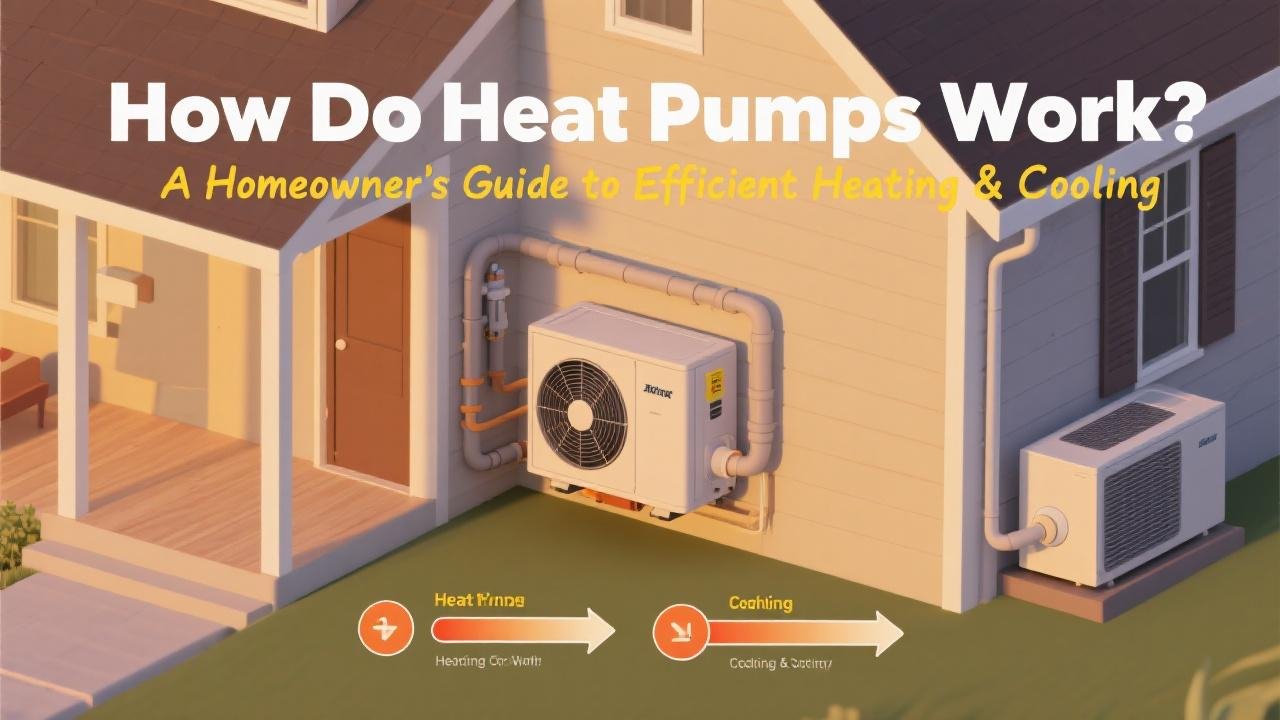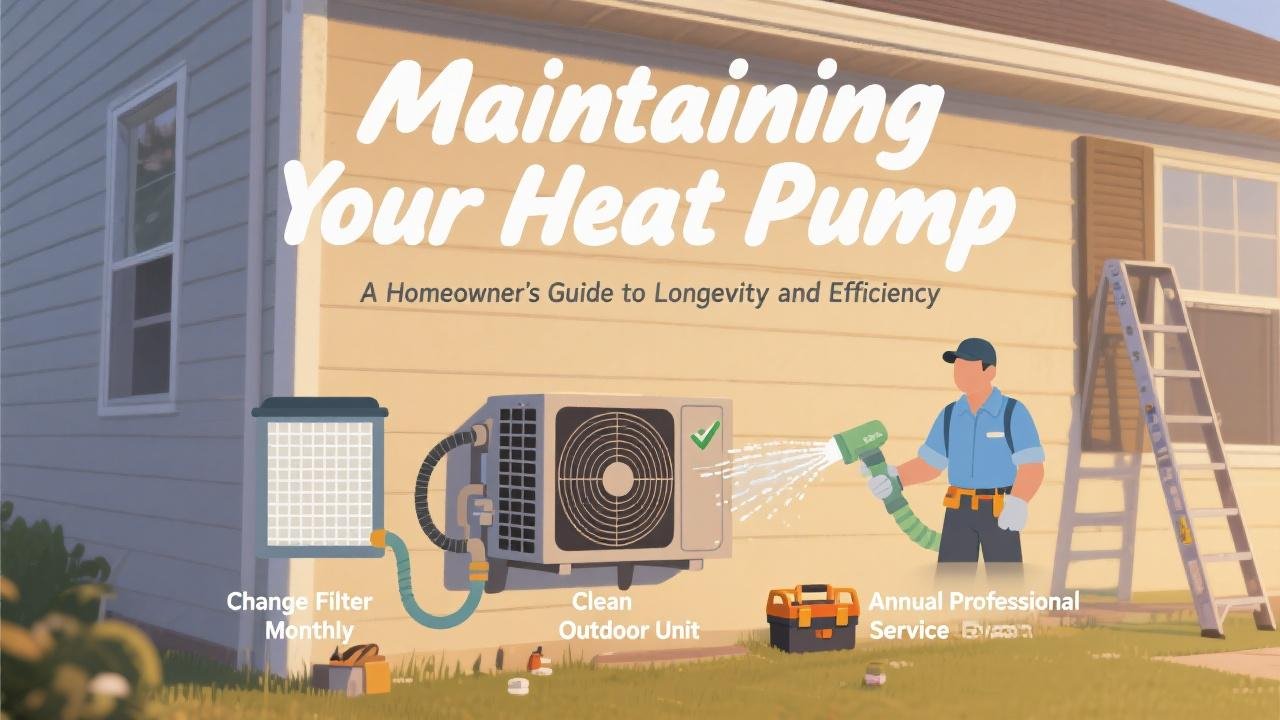The Future of Home Comfort is Here
When you think about heating and cooling your home, traditional furnaces and air conditioners likely come to mind. But there’s a highly efficient and increasingly popular technology that handles both tasks with remarkable effectiveness: the heat pump. In 2025, as homeowners seek greater energy savings, improved comfort, and more environmentally friendly solutions, understanding how heat pumps work is more relevant than ever. This guide will demystify this versatile HVAC technology, explaining its principles and why it’s becoming a cornerstone of modern home energy systems. Platforms like EnergySage can also help you explore heat pump options and connect with qualified installers.
The Basic Principle: Moving Heat, Not Making It
Unlike traditional furnaces that burn fuel to create heat, or standard air conditioners that only expel heat from your home, a heat pump operates on a clever principle: it moves existing heat from one place to another. Think of it like a refrigerator working in reverse for heating, or a super-efficient air conditioner for cooling.
- During Winter (Heating Mode): A heat pump extracts heat from a source outside your home (even when it’s cold!) and transfers it inside to warm your living spaces.
- During Summer (Cooling Mode): The process reverses. The heat pump extracts heat from inside your home and releases it outdoors, just like a conventional air conditioner.
This heat transfer process is significantly more energy-efficient than generating heat from scratch, which is why heat pumps can lead to substantial energy savings.

Key Components of a Heat Pump System:
All heat pumps, regardless of type, share some fundamental components:
1. Outdoor Unit (Condenser/Evaporator): Contains a coil and a fan. In heating mode, the coil acts as an evaporator, absorbing heat from the outside source. In cooling mode, it acts as a condenser, releasing heat to the outside.
2. Indoor Unit (Air Handler/Evaporator/Condenser): Also contains a coil and a fan. This unit distributes the heated or cooled air throughout your home, typically via ductwork (for central systems) or directly into the room (for ductless mini-splits).
3. Refrigerant: A special fluid that circulates between the indoor and outdoor units, absorbing and releasing heat as it changes between liquid and gas states. This is the medium that carries the heat.
4. Compressor: Located in the outdoor unit, the compressor pressurizes the refrigerant, increasing its temperature, which is crucial for the heat transfer process.
5. Reversing Valve: This component changes the direction of the refrigerant flow, allowing the system to switch between heating and cooling modes.
Types of Heat Pumps:
There are two primary types of heat pumps homeowners should be aware of:
1. Air-Source Heat Pumps (ASHPs):
* How They Work: ASHPs are the most common type. They extract heat from the outside air in winter and release heat to the outside air in summer. Modern ASHPs can effectively extract heat even in very cold temperatures, with some models designed specifically for cold climates operating efficiently down to -13°F (-25°C) or even lower.
* Sub-Types:
* Ducted (Central) Systems: These connect to your home’s existing ductwork, providing whole-house heating and cooling, similar to a central AC or furnace.
* Ductless Mini-Split Systems: These don’t require ductwork. They consist of an outdoor unit connected to one or more indoor “heads” mounted on walls or ceilings in different zones of your home. Mini-splits are excellent for homes without existing ducts, for additions, or for providing zoned heating and cooling.
* Efficiency: Measured by SEER2 (Seasonal Energy Efficiency Ratio 2) for cooling and HSPF2 (Heating Seasonal Performance Factor 2) for heating. Higher numbers mean greater efficiency. ENERGY STAR certified models meet strict efficiency criteria.
2. Geothermal (Ground-Source) Heat Pumps (GSHPs):
* How They Work: GSHPs use the stable temperature of the earth (or a nearby body of water) as their heat source in winter and heat sink in summer. A system of pipes, called a ground loop, is buried in your yard. A water-based solution circulates through these pipes, absorbing heat from the ground in winter and transferring it to the heat pump, or dissipating heat from your home into the ground in summer.
* Pros: Extremely efficient (often the most efficient type), very long lifespan for the ground loop (50+ years), quiet operation, and consistent performance regardless of outdoor air temperature.
* Cons: Higher upfront installation cost due to the excavation required for the ground loop. Requires sufficient yard space for loop installation.
* Efficiency: Measured by EER (Energy Efficiency Ratio) for cooling and COP (Coefficient of Performance) for heating.
Benefits of Heat Pump Technology in 2025:
- Energy Efficiency: Heat pumps can be 2 to 4 times more efficient than traditional furnaces and air conditioners, leading to significant reductions in energy consumption and utility bills.
- Dual Functionality: One system provides both heating and cooling, simplifying your HVAC setup.
- Environmental Benefits: By using less energy and not relying on fossil fuel combustion for heating (in the case of all-electric heat pumps), they significantly reduce greenhouse gas emissions and your home’s carbon footprint.
- Improved Comfort: Many modern heat pumps, especially variable-speed models, offer more consistent temperatures and better humidity control compared to older systems.
- Incentives: Significant federal tax credits (up to $2,000 for qualifying air-source heat pumps under the Inflation Reduction Act ) and various state and local rebates can make heat pumps more affordable.
A Smart Choice for Modern Homes
Heat pump technology represents a significant leap forward in home comfort and energy efficiency. By understanding the basic principle of moving heat rather than creating it, homeowners in 2025 can appreciate why these systems offer substantial savings and environmental benefits. Whether you’re considering an air-source or geothermal system, the dual heating and cooling capabilities, coupled with impressive efficiency ratings and available incentives, make heat pumps an intelligent investment for the future.
To learn more about which type of heat pump might be best for your home and to get quotes from qualified local installers, consider using a resource like EnergySage. They can help you compare options and navigate the process of upgrading to this efficient HVAC technology.



